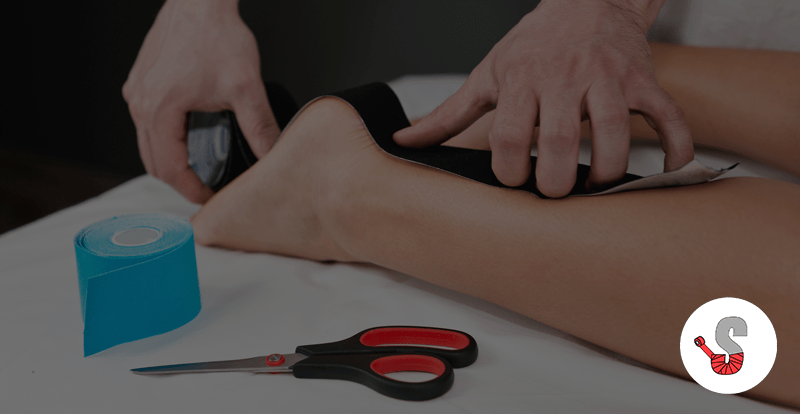6 Easy tips to get the most from your strapping

Strapping needs to stick securely to be effective. Over the years I have learnt a number of tricks and tools to get certain tapes, over certain joints to stick better or hold for longer – it is never great when a player comes to you at half time, already sweaty with tape hanging off their shoulder asking you to “stick it back on”! By then you have no chance. No tape job is indestructible – especially if you are wearing it during sport but here are some tips and tricks you can use to start the job off right by getting a reliable hold.
1) Make sure the tape area is clean before strapping
Any surface dirt or oils on the skin will affect the adhesion of the tape. The first step to achieving a really firm hold is to clean the area. If you are pitch side this could be a wet cloth but a simple medical wipe is ideal.
2) Trim the hair back
The difficulty with hair is that it not only stops the tape sticking to the skin (so is immediately less adhesive) but will also be incredibly painful to remove! Removing the hair with a razor is ideal, however even trimming some of it back with scissors will reduce these problems.
A lot of taping techniques involve circling the tape in a full loop around the leg or the arm. In this case it isn’t so important because the tape can stick to itself.
3) Utilise fixation tape or underwrap
A fixation style underwrap is a perfect addition to a sports strapping kit. It sticks better to the skin than zinc oxide and is a lot less likely to come off with sweat. It can be great to use as an overwrap to hold down the ends of that tape around joints like shoulders.
4) Use a sticky spray
“Sticky spray” is a pre-adhesive spray that applies a thin film to the surface of the skin. Another bonus is that it is waterproof so it works brilliantly if you sweat! This should generally be applied under all shoulder strappings – particularly with your really sweaty athletes.
5) Warm the tape if required
Another point to consider is the adhesive on zinc oxide tape becomes stickier at warmer temperatures. When you apply the tape your body heat warms it up to full strength so you can speed up this process by applying a little extra heat. Rubbing on the tape to create friction to heat it up is easy to do and can warm up your hands at the same time when you are standing pitch side on a cold winters day!
6) Apply the tape in the right way
Make sure you know why you are taping for example, to minimise movement in ‘x’ direction. This way you know where you are putting the tape and what direction you are applying it. Always start with the joint in the ‘at rest’ position and encourage the athlete to relax their muscles as you apply. Tight, flexed muscles can mean the tape then becomes loose when they relax.
As mentioned, a lot can come from experience when it comes to knowing what works to help tape stick, but implementing these few tips can definitely help get the most out of your strapping.




Responses